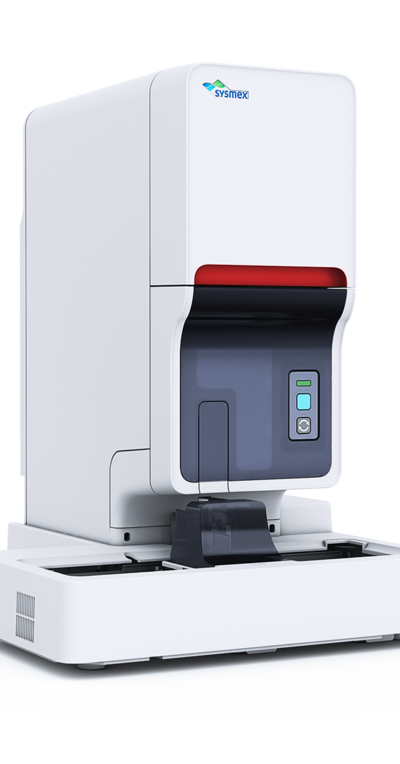The Malaria Express
XTRA ARTICLE ISSUE 2/2021
Text: Verena Fischer
How the XN-31 speeds up malaria analysis at Dr Wisplinghoff’s laboratory in Cologne
Dr Wisplinghoff’s laboratory in Cologne has been conducting research for over 40 years and the company has grown significantly during the last few years. “The proportion of senders from the hospital sector in particular has increased,” says PD Dr Olav Gressner, a specialist in laboratory medicine and clinical chemistry. “We now also receive more blood samples where malaria is suspected, which has increased the demands on our targeted malaria diagnoses.”
In order to meet these demands, the laboratory decided to purchase the XN-31 analyser, which records all plasmodium types and quantifies their concentration in a fully automated process. “This is a great relief and saves us a lot of time,” explains Dr Dennis Hoffmann, the lab’s technical director. PD Dr Gressner agrees: “It starts with our processes. In the past, samples where malaria is suspected would first be taken to the microbiology department. Now, they are sent directly to the central laboratory and the XN-31.” This has streamlined a sample’s journey from arrival to evaluation. “This is crucial because malaria samples are the top priority at our lab and are analysed as quickly as possible.”
This change has accelerated logistics and reduced the time required to exclude negative samples. “Before we had the XN-31, we always had to analyse samples first using a thick drop under the microscope. That would take almost 30 minutes.” The XN-31 makes it possible to confirm or exclude the suspicion of malaria within a few seconds – thus significantly accelerating the workflow. Another considerable advantage is the ability to conduct malaria testing very quickly, including at night and on the weekend. “That can now be done easily and quickly, without needing to have specialised technicians on site in the microbiology department,” confirms Dr Hoffmann, who has been working at the laboratory for 13 years.

Malaria as a holiday souvenir
The European Centre for Disease Prevention and Control (ECDC) has confirmed that the number of malaria diagnoses in Europe is actually rising. A recently published report documents 8,641 reported cases across the European Union in 2019, of which 99% were confirmed. It observed a pronounced seasonal trend in all countries, with cases rising immediately after the summer holidays between July and September. The country with the highest number of cases was France, followed by the United Kingdom and Germany, which saw a 10% increase in cases on the previous year.
In Dr Wisplinghoff’s laboratory, too, a particularly high number of samples in which malaria is suspected arrive after the holiday period, when people returning from trips to tropical countries visit their physician with flu-like symptoms, such as fatigue, headaches, joint pain and irregular bouts of fever. “Among the cases in which malaria is suspected, the proportion of positive samples is high. Plasmodia are present in around two-thirds of these samples,” PD Dr Gressner confirms. The laboratory doctor has been positively surprised by the fact that the XN-31 can distinguish between individual plasmodium strains. “We did not base our purchase decision on this, but it also saves us and our microbiologists even more time by ensuring clear logistical processes in the laboratory.”

Leaving nothing to chance
Of course, not all physicians who send samples are tropical medicine specialists. This means that the laboratory can sometimes identify positive cases by chance. “If we discover plasmodia during manual differentiation, these samples can be analysed immediately in the XN-31. This saves us a lot of time during manual microscopy.”
At the same time, medical technical assistants who discover the chance findings get diagnostic certainty. “It becomes clear very quickly whether it is really malaria and also which pathogen strain it is.” The experts concur that routine screening for malaria would be generally desirable, especially when more people have begun to travel again and are at risk of being infected by an Anopheles mosquito.
Summary
- Especially after the holiday season, Dr Wisplinghoff’s laboratory in Cologne receives many samples in which malaria is suspected. The laboratory has now purchased the XN-31 analyser with this in mind.
- The XN-31 quantifies and classifies plasmodia in seconds. This saves time and accelerates the workflow.
Image source: Jan Fassbender



